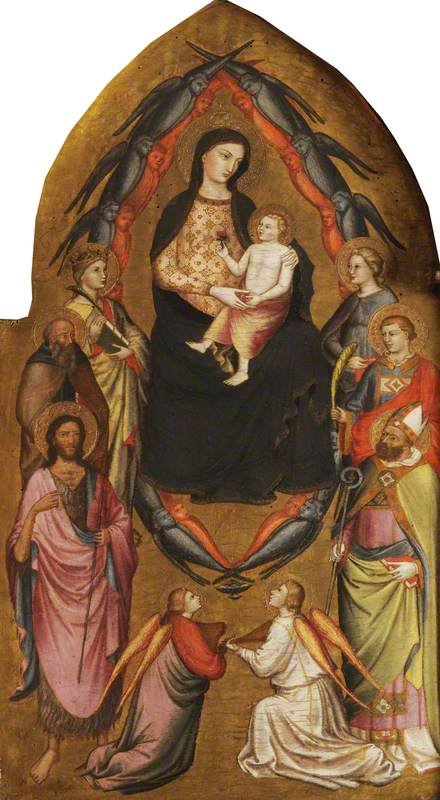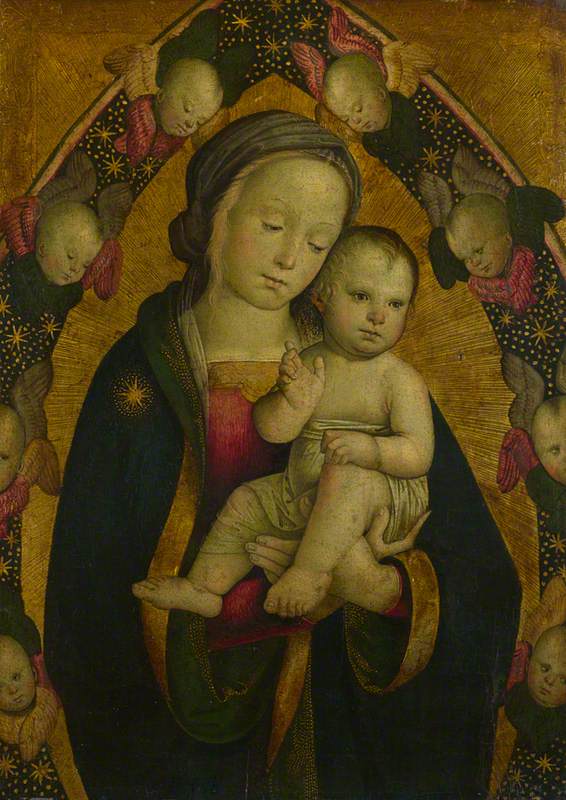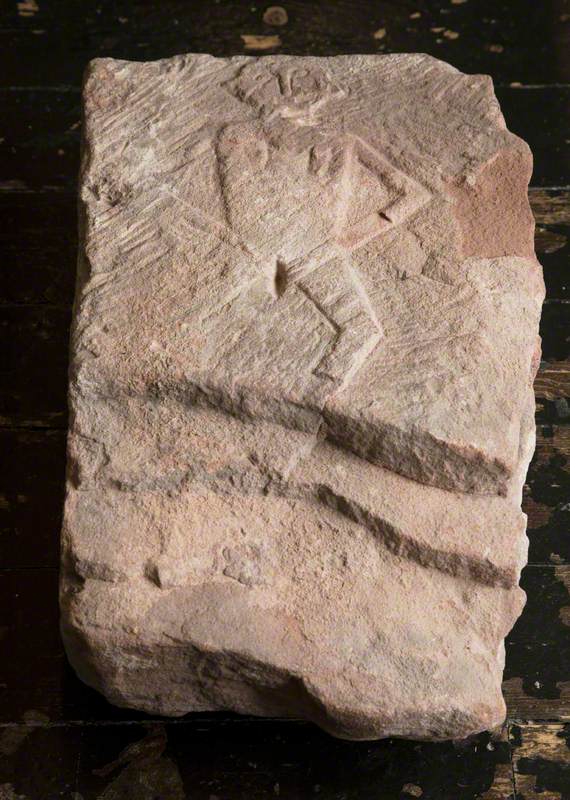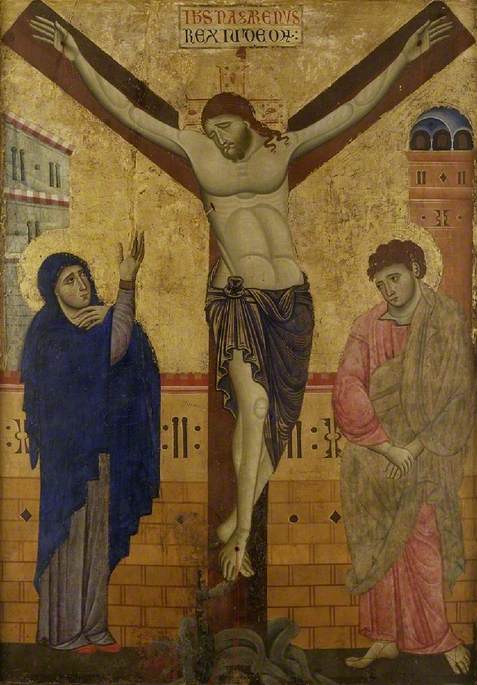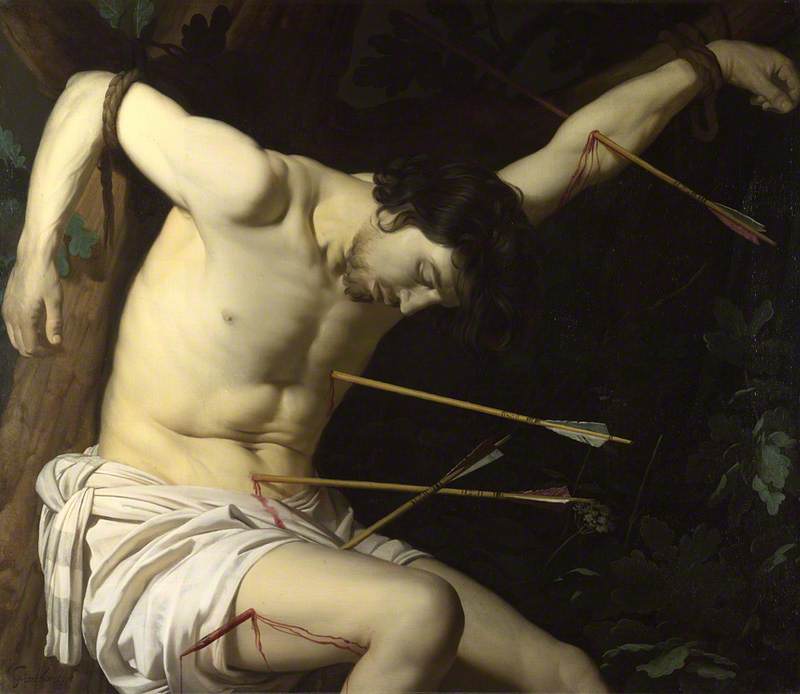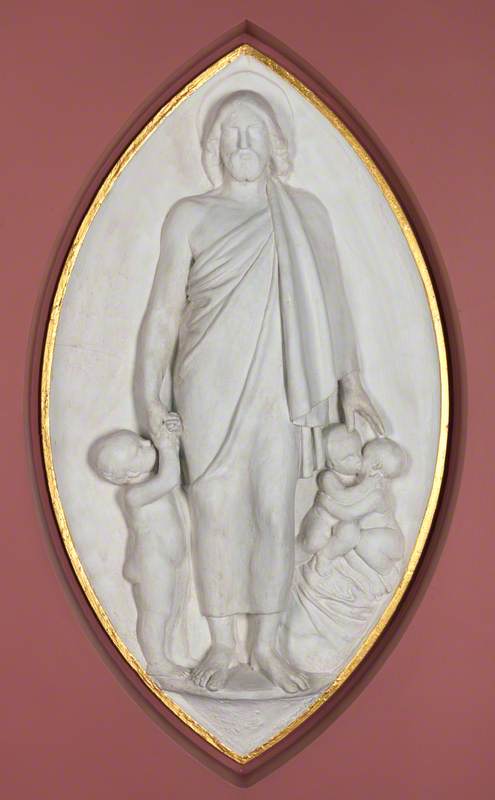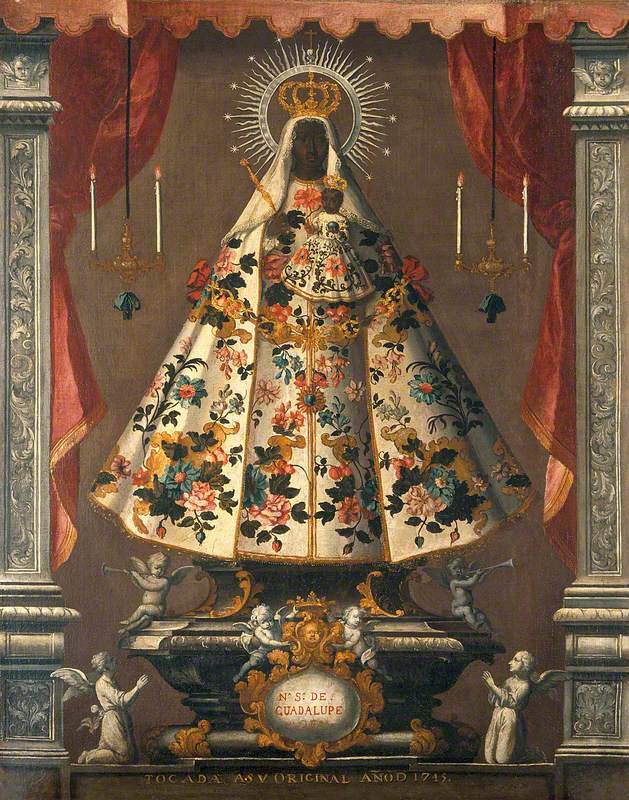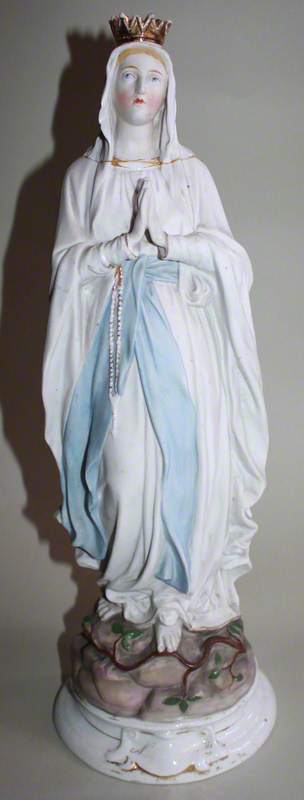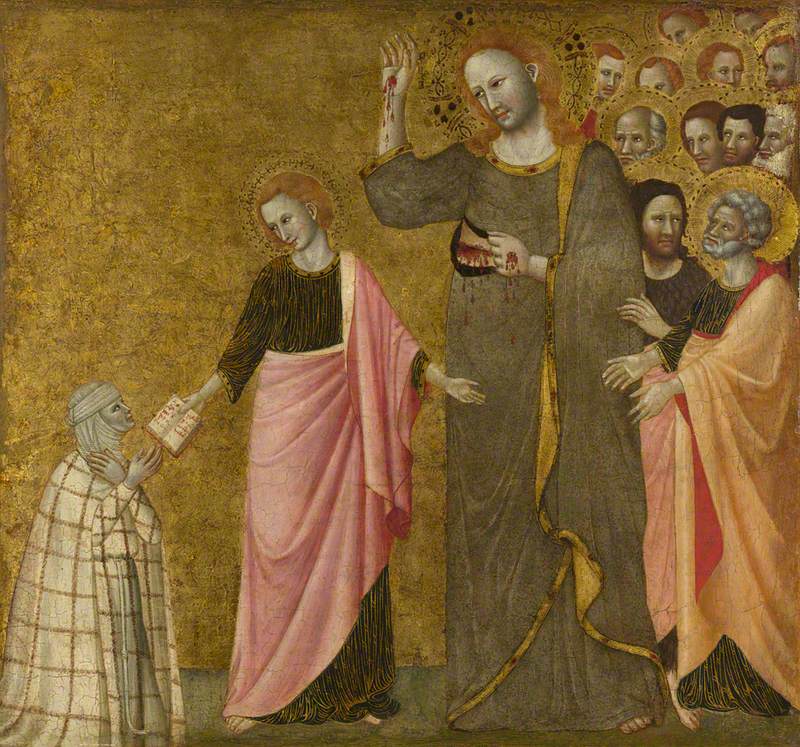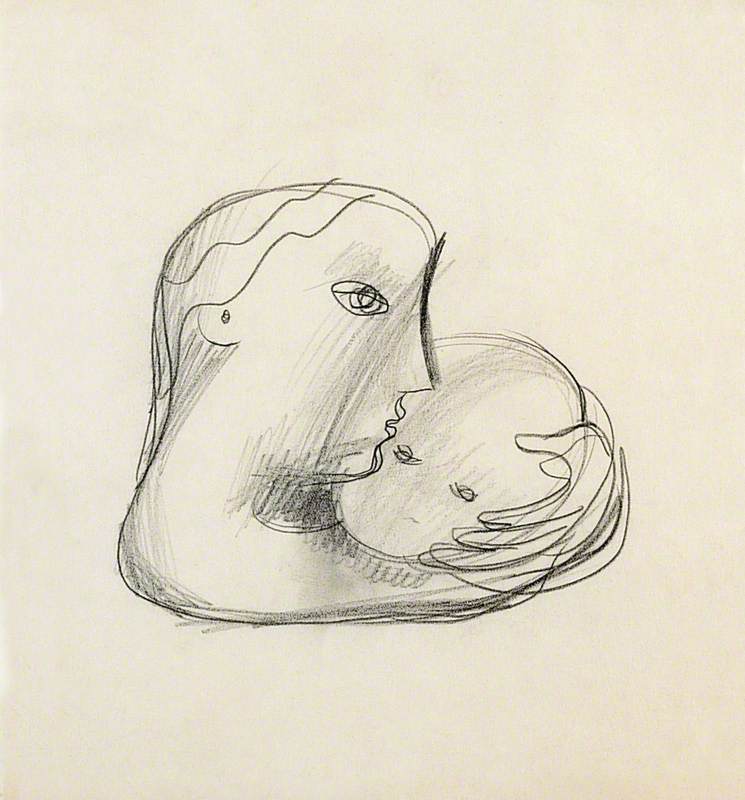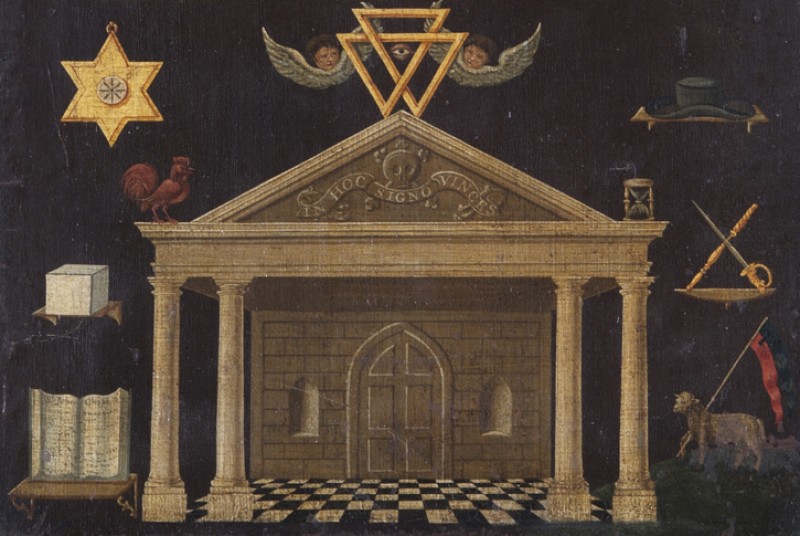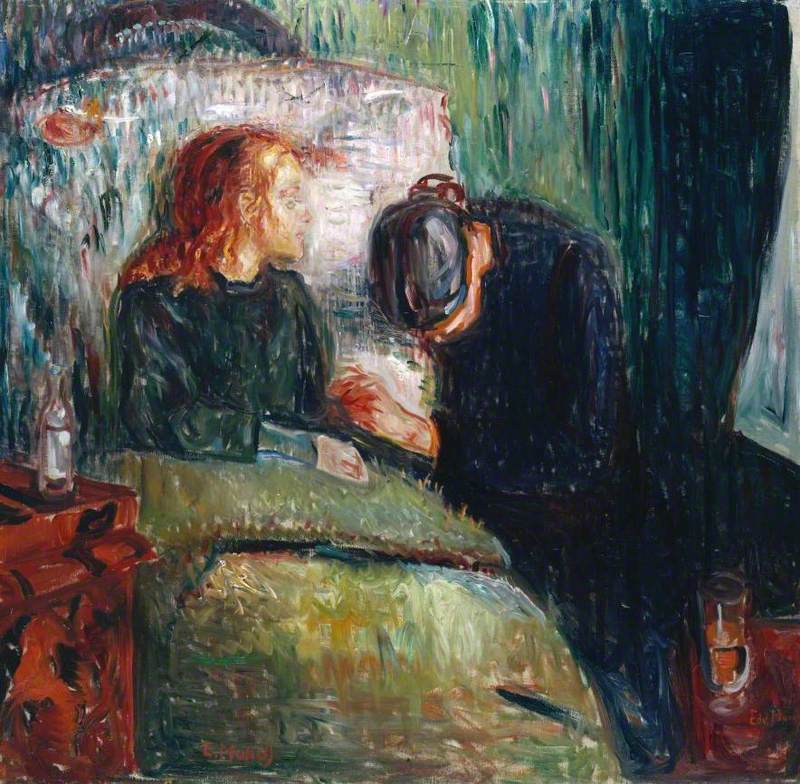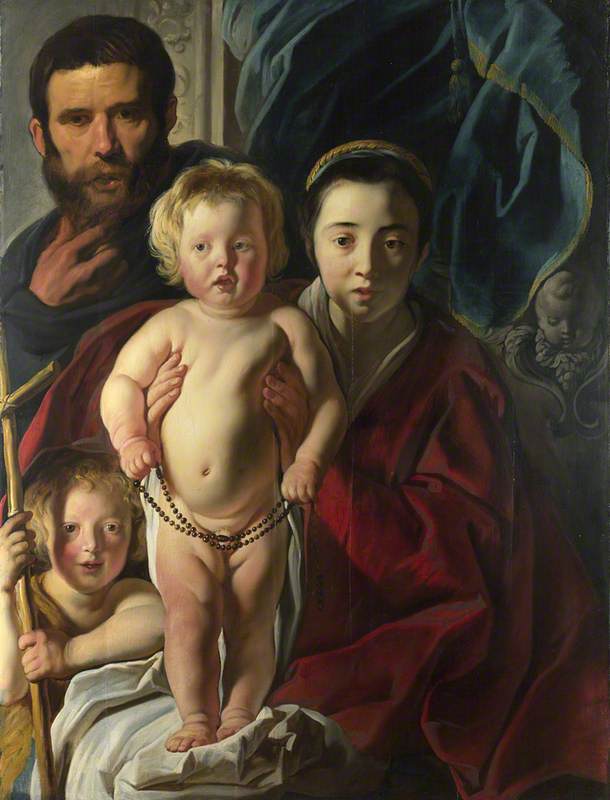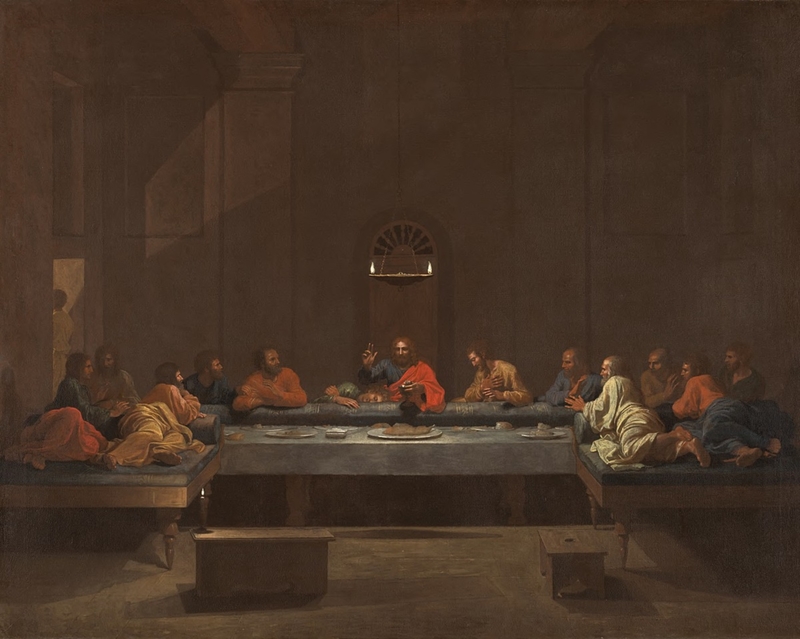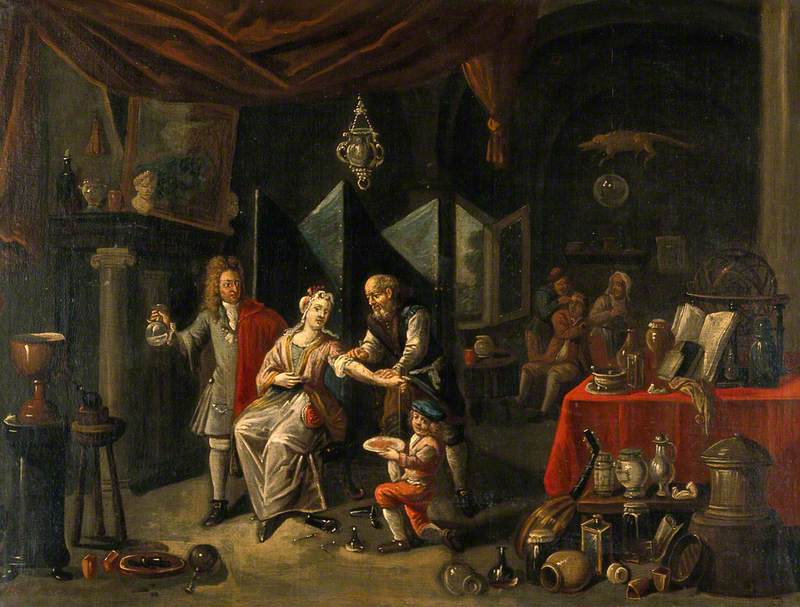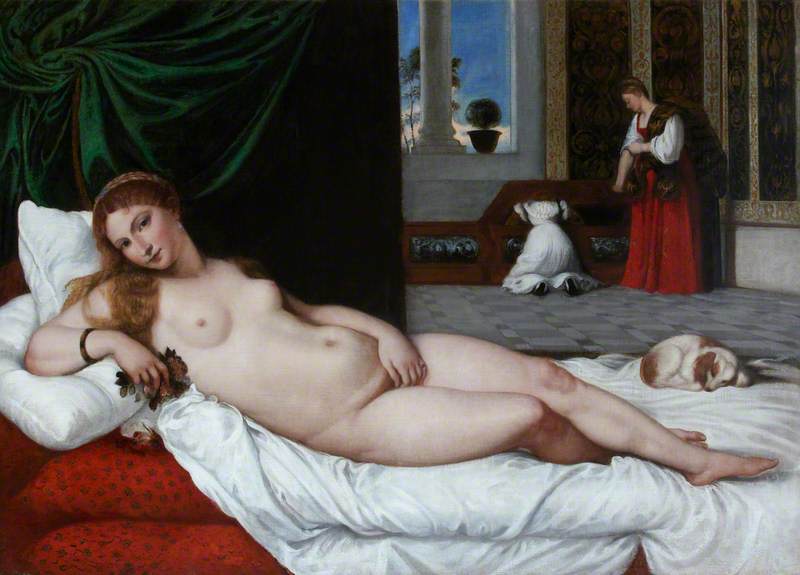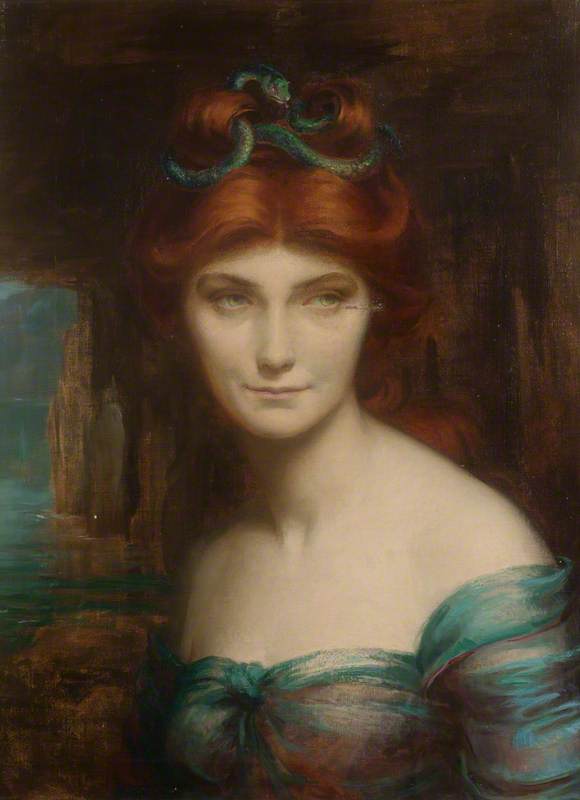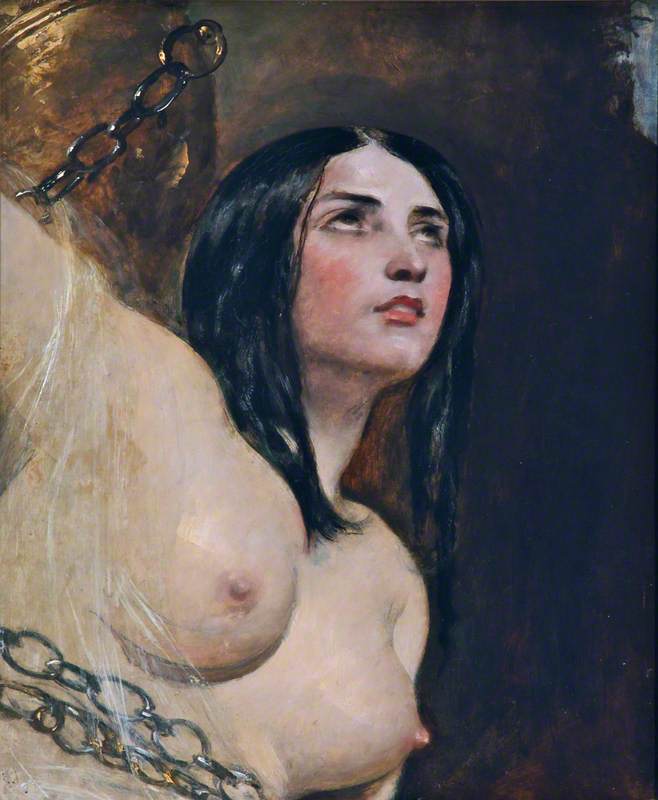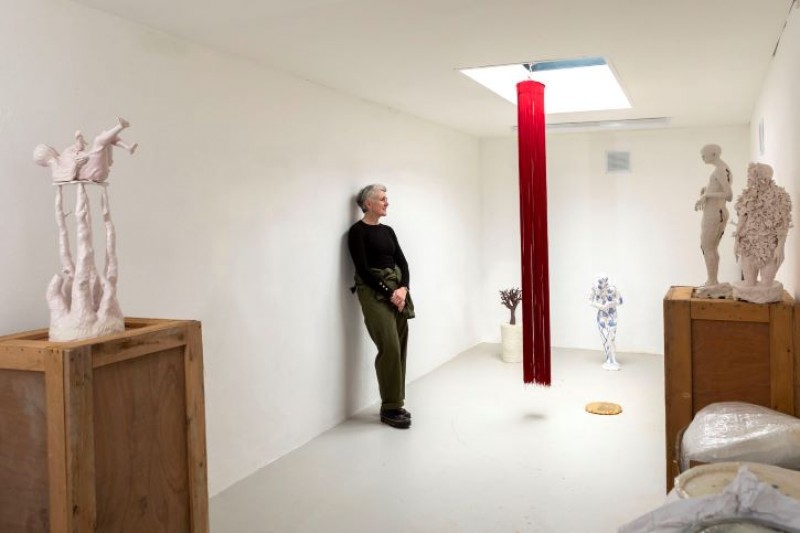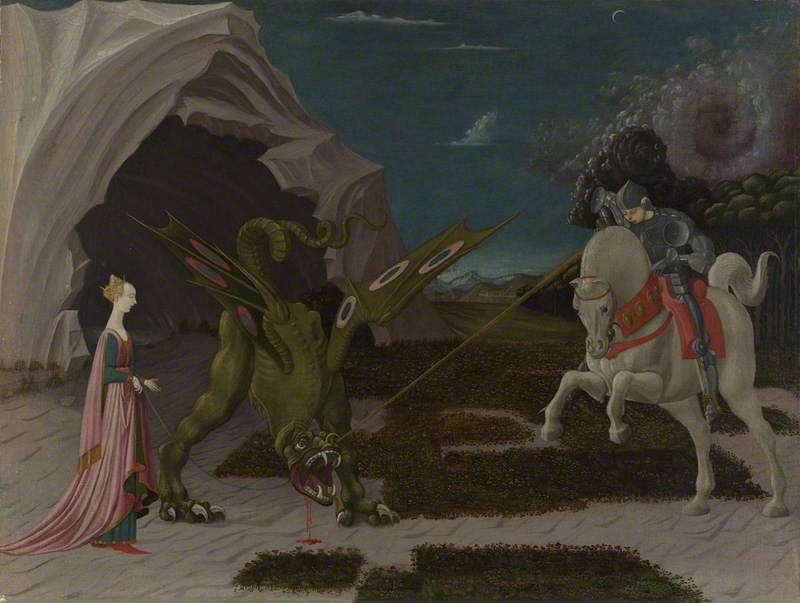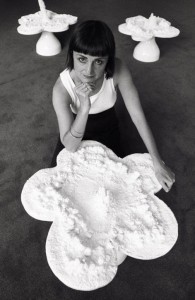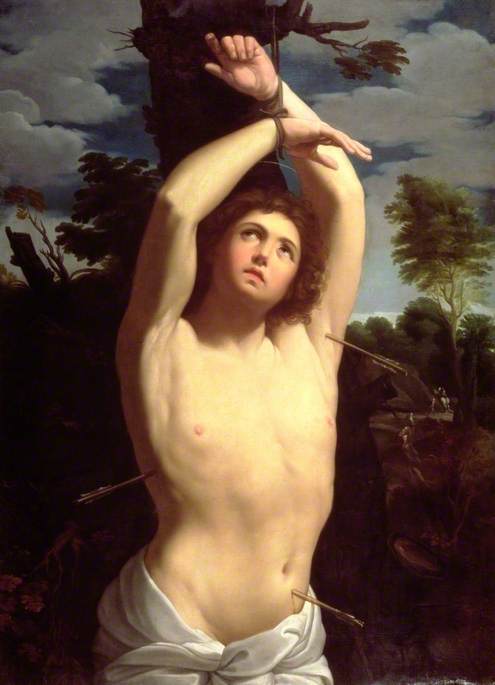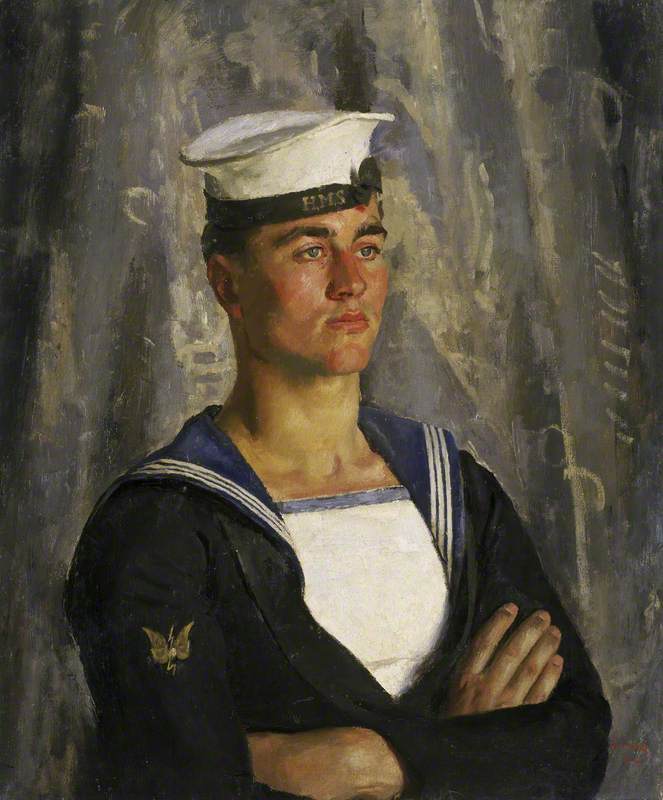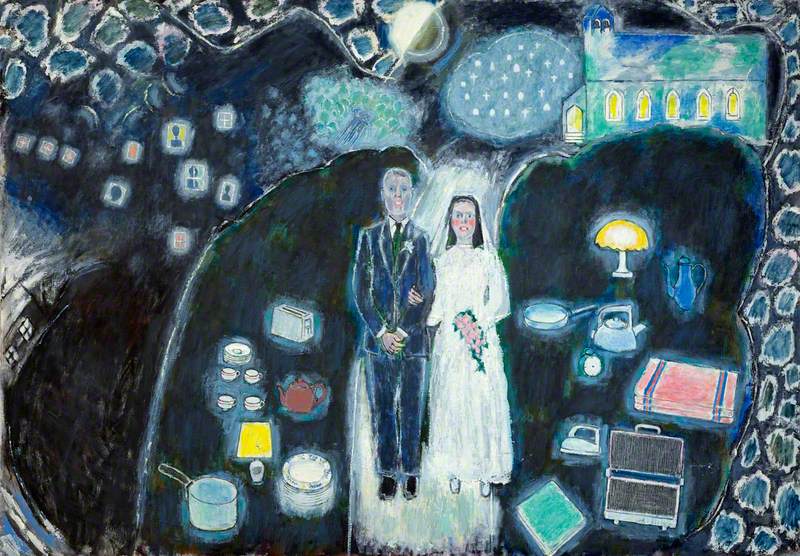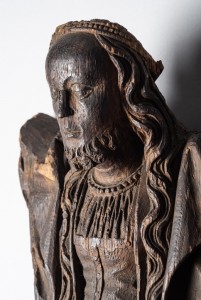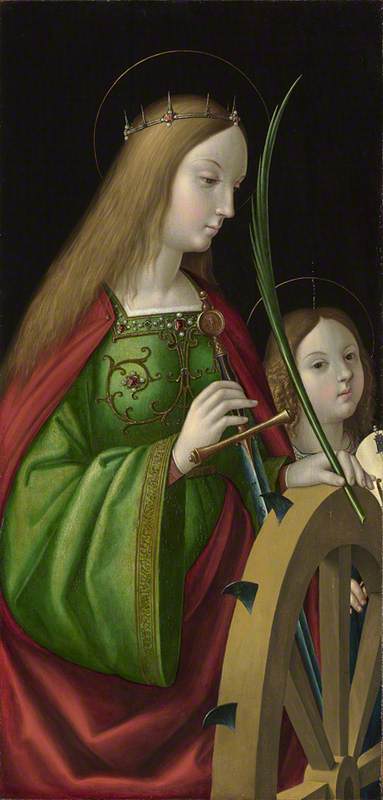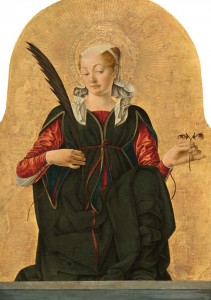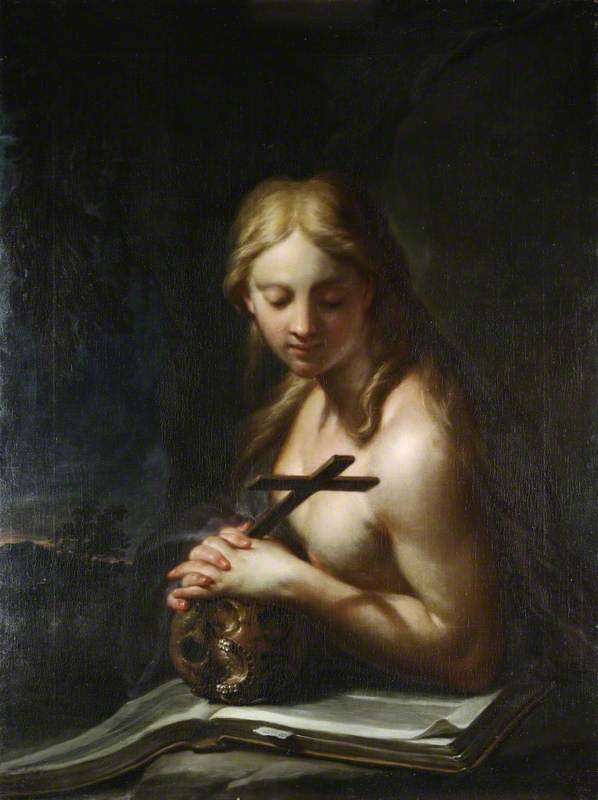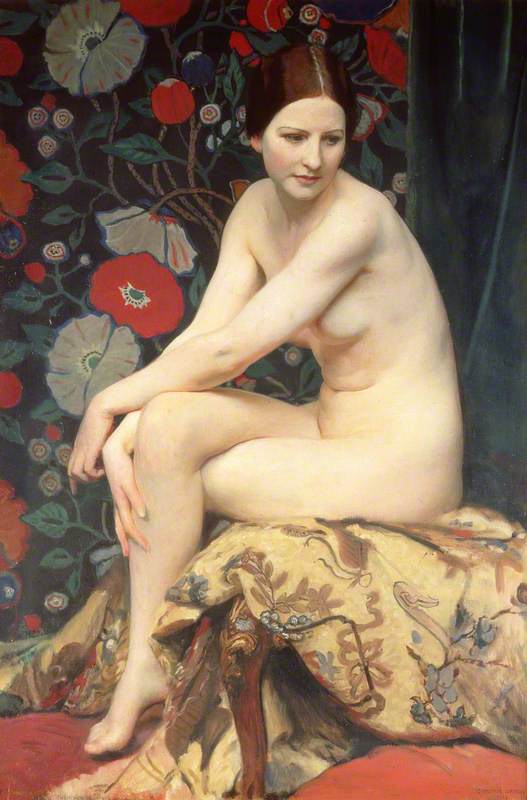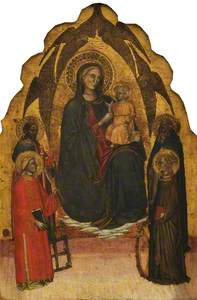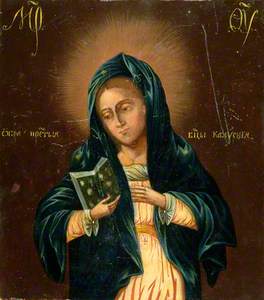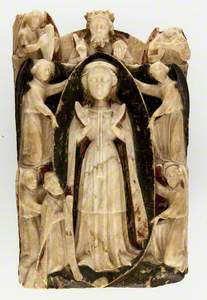Sexual imagery has been part of Christian art since its inception, at once humanising the figures of Mary and Jesus while emphasising how bodily perfection is divinity. One of the best examples of this is vulva imagery in Marian portraits – paintings and sculptures of Jesus's virginal mother. While not as explicit as homoerotic depictions of Jesus and Saint Sebastian, Mary's enveloping vulva has a much older history, tied to prehistoric depictions of a primordial mother goddess in cave paintings through to contemporary lesbian Chicana art.
Before beginning this piece, it is important to note that vulva imagery in prehistoric and Medieval art has, up until recently, been exclusively coded as female. However, today's greater understanding of gender diversity problematises art and scholarship that conflates womanhood and femininity with having a vagina: not all women have vulvas, and not all people with vulvas are women.
The Virgin and Child Enthroned, with Scenes of the Nativity and the Lives of the Saints
1260s
Margarito d'Arezzo (active c.1250–1290) 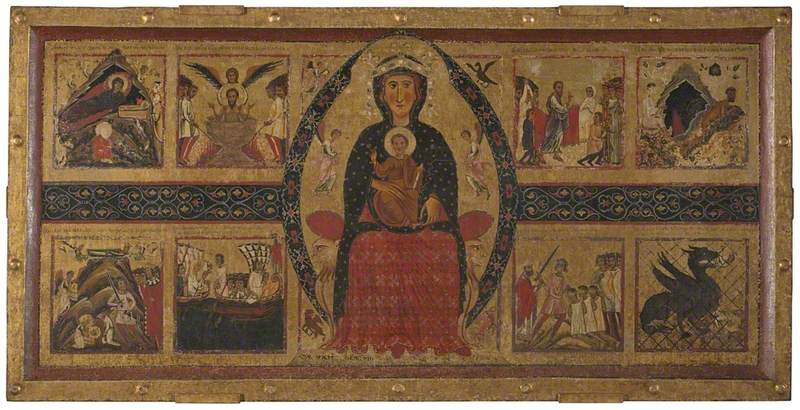
Yonic iconography – or imagery depicting the vulva or vagina – is some of the oldest in the world. Prehistoric vulva paintings have been found in France's La Ferrassie cave, and in Spain's Titi Bustillo and El Buxu caves, for example. As scholar Marja Gimbatus argues, the locations of these paintings and carvings are significant, as entering a cave is to return to a place of origin, a place where a primordial goddess gave birth to all the life recorded on its walls.
The Queen of Heaven (Inanna)
1970–1980
Pat Douthwaite (1934–2002) 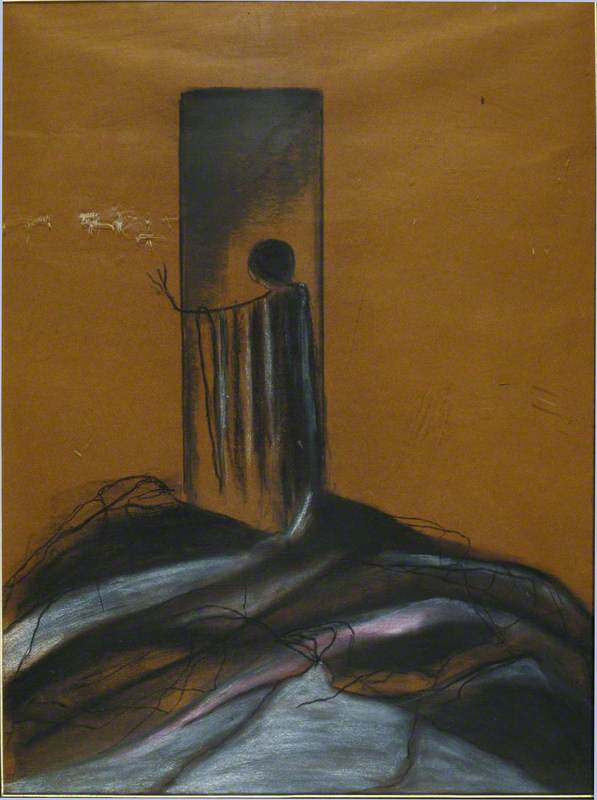
Along with two-dimensional art, people began to create clay models of vulvae left in caves (often as part of altars) or to carry with them as protective amulets.
A Clay Figure in the Form of a Vagina Assumed to Have Been Made as a Votive Offering
unknown artist 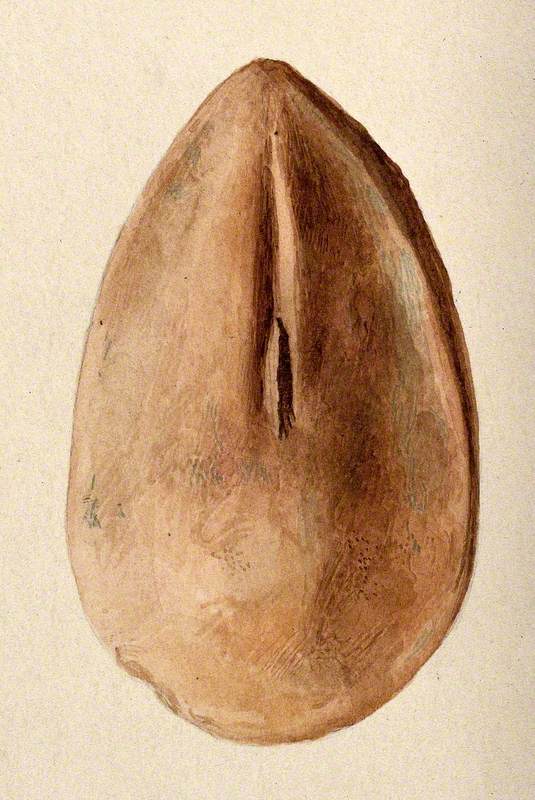
Believed to protect against impotence, these handheld carvings were discovered in the ancient Mesopotamian temple of the Sumerian goddess Inanna. Inanna would later fuse with the Akkadian goddess Ishtar, and influence later Ugaritic and Phoenician goddesses who inspired Aphrodite. Inanna's cult dispersed during the influx of Christianity in the first century.
Later came Sheela-na-gig, an older woman exposing her vulva and vagina in a frog-like squat. From the twelfth century, masons would carve Sheela-na-gig into walls of Irish and British churches, especially above entryways, to keep evil spirits out. Believed to originate from European indigenous pagan religions, she was the first example of vulva iconography entering the Christian church, who later called her a witch and pagan goddess. Other examples are the small metal badges of a vulva, often a standalone figure with a hat, rosary, and staff, worn by European medieval pilgrims for protection when travelling to holy sites.
Scholars Anthony Weir and James Jerman highlight the prevalence of other sexual carvings within medieval churches in Western Europe. At the same time, in Eastern Europe and the Middle East, the Byzantine Empire was creating mosaics, paintings and carvings idealising a two-dimensional, sexless Jesus and Mary. By 1260, Christian artists across Europe were fighting back against these stoic, static figures with ostentatio genitalium – a term that refers to the artistic emphasis of Christ's genitals. These images may have suggested that the visual virility of Christ was tied to his divinity.
By the Renaissance, emphasis on the male and female sexual form blossomed, with sexualised portraits of saints, like Saint Sebastian, David, Adam and God – many of which had homoerotic overtones. At the same time that artists embraced Jesus's sexualised body, Mary was still bound by an emphasis on virginal purity and modesty. Building on the tradition of vulva imagery in the early medieval church, as scholar Yvonne Owens describes, artists began to depict her within a strikingly popular almond shape – the mandorla or vesica piscis. Mary, as well as Jesus, would appear within an elongated oval: a distinctly vulva-inspired shape.
While scholars debate when artists first began depicting Mary within this womb of creation, most can agree that the inclusion of the mandorla took off after the sixteenth century, right around the time when Mary is believed to have appeared as the Virgin of Guadalupe to Chichimec peasant Juan Diego in 1531. During her last apparition to Diego, who begged for a way to verify her existence, she arranged flowers within his tilmàtli which, when opened before the local Archbishop, revealed her figure surrounded by a mandorla of golden light. As the Virgin of Guadalupe's image took off, so did portraits of Mary framed by her flowing robes and ovals of light.
Her flowing robes, resembling labial folds, and the placement of her head at the apex – like the clitoris – reinforced Mary's role within Christianity as the mother of God: the primordial womb of the Church. In the same way that prehistoric goddesses were represented in cave paintings by a vulva, Mary is depicted as the tunnel through which God entered the world and the pathway through which Christians reach God (as she is Mediatrix – an intercessor). This did not, however, invalidate the eroticism of this coded sexual symbolism in Christian art.
The once-coded sexual imagery became far more explicit in the twentieth century, when the 'Goddess worship' movement took off in the 1960s and 1970s. At this time, artists reimagined Mary as one personification of the Divine Feminine and added her to a pantheon of sacred women throughout history. While this art did present explicit birth scenes, it did not focus on the pre-existing vulvar imagery. A notable depiction of Mary is Mary Beth Edelson, who portrayed herself as Mary holding her castrated son in the book The Last Temptation of Lorena Bobbitt.
View this post on Instagram
Today, vulvar imagery is actively reclaimed during the twenty-first-century revival of Goddess worship, folk Catholicism, and neo-Paganism in Europe and the Americas. While some are readopting ancient vulva imagery – reclaiming the vulva as an icon of primal creative energy – many are also reclaiming Christian Marian vulva imagery and complicating Mary's sexuality and divinity. All of these traditions tie back to the ancient worship of the vulva for its creative powers. Artists and makers, such as Emiliana Stein, Méli Na, Anna R. Reyes and others, create vulva Mary ornaments, statuettes, tattoos and more!
View this post on Instagram
The reclamation of Marian vulva imagery and sexually explicit Marian art today sparks not only conversations about Mary's ancient goddess inspiration (similar to how pre-Christian deities were absorbed into Christian saints) but also Christian gender values and colonisation.
Scholar María del Mar Pérez-Gil argues that by depicting Mary as explicitly nude or semi-nude, contemporary artists are disrupting her coded imagery and gender roles to create an icon of affirmative selfhood for transgender individuals. Feminist Cristina Serna extrapolates further, within a transborder (that which crosses geographic borders) archive of queer Chicana feminist and Mexican lesbian feminist art called Las Sucias. One of the prominent topics for contributing artists is the Virgin of Guadalupe, a symbol of Latinx identity who is always depicted in a vulva-shaped form. Artists explore how the object of devotion is not Mary herself but la panoncha, slang for vulva, within patriarchal societies and institutions that regulate the bodies of people with vulvas.
View this post on Instagram
'La Virgen de las Panochas', an anthropomorphised vulva visualised by Las Sucias is, therefore, the incarnation and embodiment of sexual pleasure within Chicana, Mexicana, and Latina genealogy, in contrast to the desexualised Marian imagery featuring the coded mandorla. By foregrounding this genitalia (humanising the vulva and bringing it front and centre), it deciphers what once was a coded (and viewed as dirty) body part and reclaims it. A great example of the sapphic potential of a sexual Mary is Chicana artist Alma López's vulva virgin. Sandra Cisneros, author of the essay 'Guadalupe the Sex Goddess', mirrors this transformation of the Virgin of Guadalupe from a feminine ideal into a goddess by humanising and indigenising Mary.
Therefore, what many people – including myself – failed to recognise as vulva imagery in iconic Christian artwork has a long history tying Mary to her ancient goddess inspiration, coded sexual imagery, and sexually regulated and colonised body.
Emma Cieslik, religious scholar, museum professional and writer
Further reading
Marija Gimbutas, The Civilization of the Goddess: The World of Old Europe, HarperCollins, 1991
James Jerman and Anthony Weir, Images of Lust: Sexual Carvings on Medieval Churches, Taylor & Francis Ltd, 2017
Irene Lara, 'Goddess of the Américas in the Decolonial Imaginary...', Feminist Studies, Vol. 34, No. 1/2, 2008
Ben Reiss, 'Pious Phalluses and Holy Vulvas...', Peregrinations: Journal of Medieval Art and Architecture, Vol. 6, No. 1, 2017
